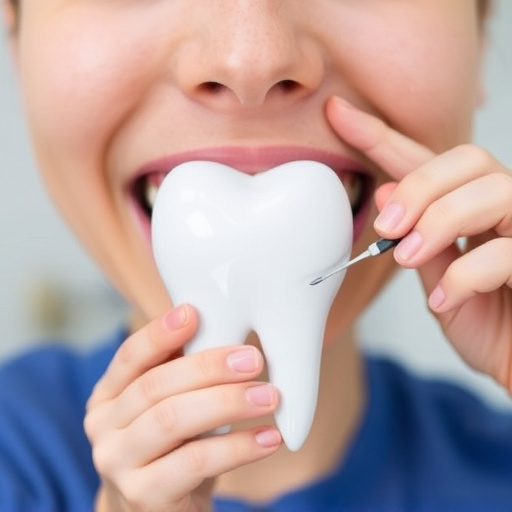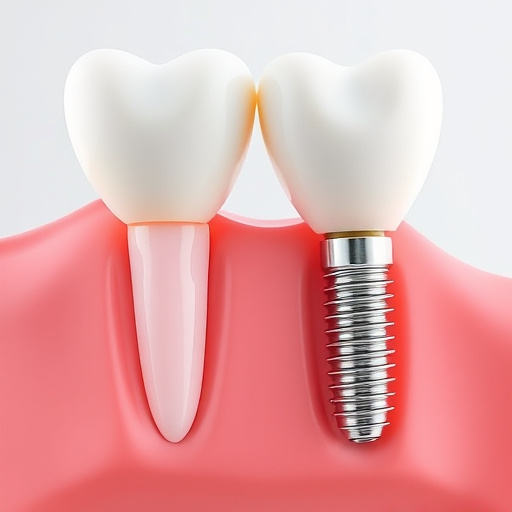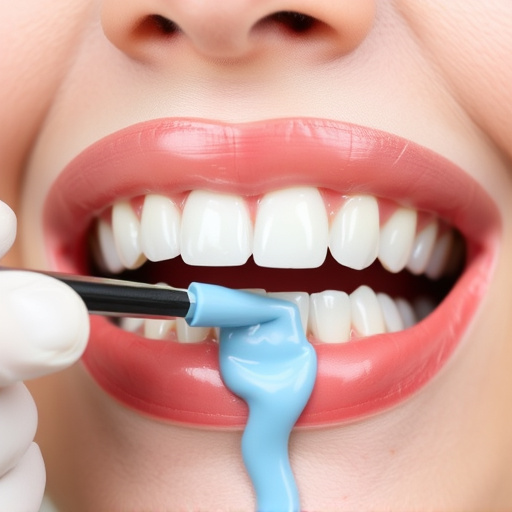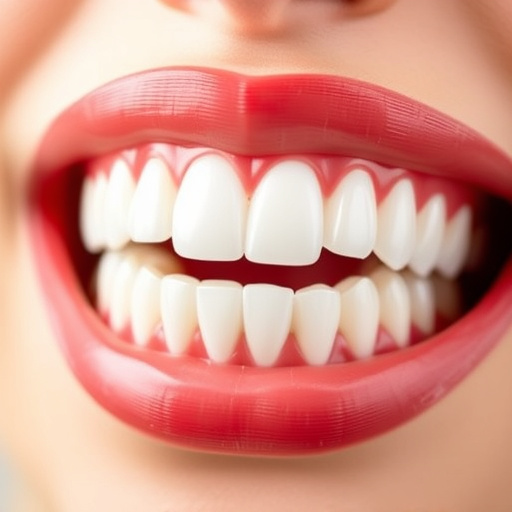Dental sealants for teeth are a preventive solution that creates a protective barrier against sugar and food particles in molars and premolars, reducing the risk of tooth decay and chips, especially in children's dentistry. Unlike fillings or clear aligners focused on restoration, dental sealants offer long-term protection by sealing pits and grooves to prevent bacteria penetration.
Dental sealants for teeth are an effective protective measure against sugar and food particles, preventing cavities and damage. This article delves into the science behind these clear coatings, explaining how they create a barrier on tooth surfaces, shielding them from the corrosive effects of sugars and debris. By understanding how dental sealants work, you can make informed decisions about maintaining optimal oral health.
- Understanding Dental Sealants: A Protective Barrier
- How Sugar and Food Particles Damage Teeth
- The Science Behind Sealant Efficacy Against Sugary Threats
Understanding Dental Sealants: A Protective Barrier

Dental sealants for teeth are a popular preventive measure in restorative dentistry, acting as a protective barrier against sugar and food particles. These thin, durable coatings are applied to the chewing surfaces of back teeth, where decay is most likely to start. By sealing out bacteria and debris, dental sealants create an impenetrable layer that shields enamel from erosion. This proactive approach is particularly beneficial for children and teens, as it can prevent the formation of cavities even before they begin.
Unlike cosmetic fillings or clear aligners, which focus on restoring or straightening teeth after damage has occurred, dental sealants take a more preemptive stance. They are applied during a simple, non-invasive procedure, where a dentist cleans the tooth surface and applies the sealant. Once set, these protective layers can last for years, offering long-term protection against tooth decay.
How Sugar and Food Particles Damage Teeth

Sugar and food particles can wreak havoc on teeth, leading to cavities and other dental issues. When sugar comes into contact with the tooth’s surface, it triggers a chemical reaction that produces acids. These acids erode the enamel, the protective outer layer of the teeth, making them more susceptible to decay. Over time, this process can create tiny holes or fissures in the enamel, allowing bacteria to penetrate and cause infections. Food particles, especially sticky ones like candies and cookies, can get trapped in these hard-to-reach areas, further exacerbating the problem. Regular brushing and flossing help remove most food debris but might not always access every crevice. This is where dental sealants for teeth come into play as a crucial preventive dentistry solution.
In general dentistry, dental sealants are protective coatings applied to the chewing surfaces of back teeth (molars) to prevent tooth decay. They act as a physical barrier against sugar and food particles by filling in the pits and grooves of the enamel. This simple yet effective procedure is often recommended for children but can also benefit adults at risk of cavities. Clear aligners, an alternative to traditional braces, can also contribute to preventative dentistry efforts, as proper oral hygiene practices during aligner wear significantly reduce the risk of dental problems.
The Science Behind Sealant Efficacy Against Sugary Threats

Dental sealants for teeth have revolutionized comprehensive dental care, offering a powerful shield against the damaging effects of sugar and food particles. The science behind their efficacy is quite fascinating. These thin, protective coatings are applied to the chewing surfaces of back teeth (molars and premolars), which are particularly susceptible to decay due to their rough textures and constant exposure to sugary foods and drinks.
The sealant acts as a physical barrier, filling in the tiny pits and grooves where bacteria can hide and produce acids that erode tooth enamel. By sealing these areas, it prevents plaque and sugars from sticking, significantly reducing the risk of tooth decay and chips. This is especially beneficial for children’s dentistry, as it helps promote healthy teeth and gums, potentially saving future families from costly emergency dental care procedures.
Dental sealants for teeth offer a powerful defense against sugar and food particles, acting as a protective barrier that prevents decay-causing bacteria from accessing tooth surfaces. By understanding how these sealants work and their proven efficacy against sugary threats, we can better protect our oral health and maintain a bright, healthy smile. Incorporating dental sealants into routine dental care is a smart step towards minimizing the impact of sugar on our teeth.














